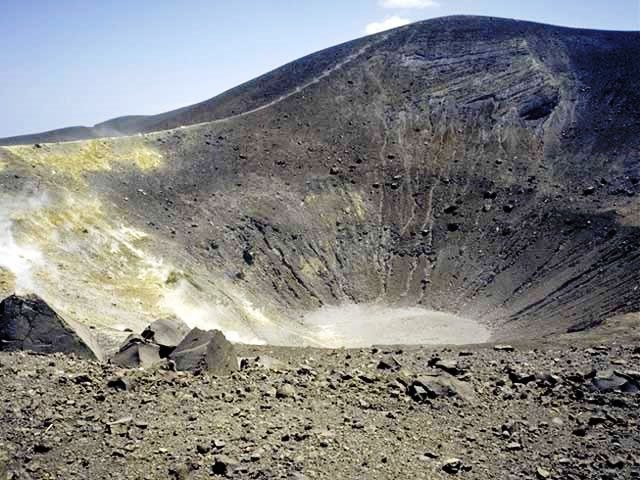Volcanoes in Italy
Vesuvio (Mount Vesuvius)
Mount Vesuvius is a stratovolcano (a volcano built up by many layers of hardened lava, tephra, pumice, and volcanic ash and characterized by a steep profile and periodic explosive eruptions and effusive eruptions) near Naples, in Southern Italy. It's one of the two active volcanoes in continental Europe. Vesuvius was formed as a result of the collision of two tectonic plates, the African and the Eurasian. It's 1281 metres high and it stands on a 4 km caldera. It has been active since 400000 years ago and, after the eruption in 1944, it has been dormant. In the past Vesuvius was the reason for some of the most famous natural disasters in Italian Peninsula history. The most notable is probably the eruption of 79 a.C., when the cities of Pompeii and Herculaneum were completely covered by ashes, killing every inhabitant. Nowadays it still represents a big risk for the whole Gulf of Naples and so a "red zone" was defined. This zone counts 28 towns, where about one million people live. The volcanic activity is monitored by the "Osservatorio Vesuviano".
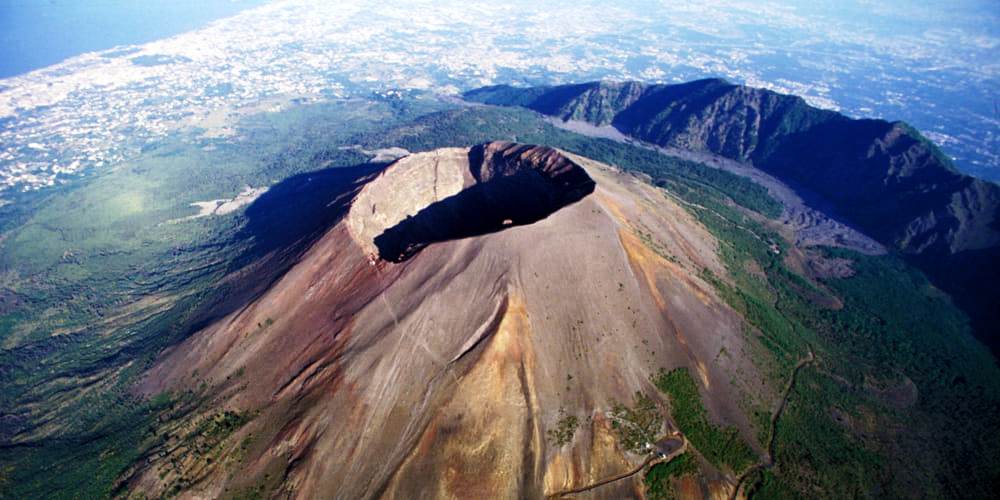
Campi Flegrei (Phlegrean Fields)
Phlegrean Fields is a volcanic area in the Gulf of Pozzuoli, west of Naples Its caldera has a 15 km diameter and it counts 24 different volcanoes and craters. Some of the Phlegrean Fields are under the sea level and there are some emerged islands, known as Phlegrean Islands (Ischia, Procida and Vivara). The history of the area is characterised by three "Phlegrean Periods": the first is from 42000 to 35000 years ago (great eruption 39000 years ago: contributed to the extinction of Neanderthal Man); the second is from 35000 to 10500 years ago (last great eruption 12000 years ago); the last is from 8000 to 500 years ago. Nowadays the Fields are in a dormancy state but they still represent one of the biggest volcanic risks in the world, alongside with the Yellowstone in North America. Infact, potentially, if every volcano in the caldera erupts, Italy and the Mediterranean area will face an apocalyptic event. The entire area is characterised by the phenomenon of "bradyseism", which is the gradual and slow uplift or descent of the ground caused by the activity of an underground magma chamber and hydrothermal activity. In the city of Pozzuoli bradyseism has been studied through the observation of some molluscs rests on ancient marble columns.
One of the most notable locations is the Solfatara volcano in Pozzuoli, where sulfur dioxide emerges from the ground and there are ponds of boiling mud.
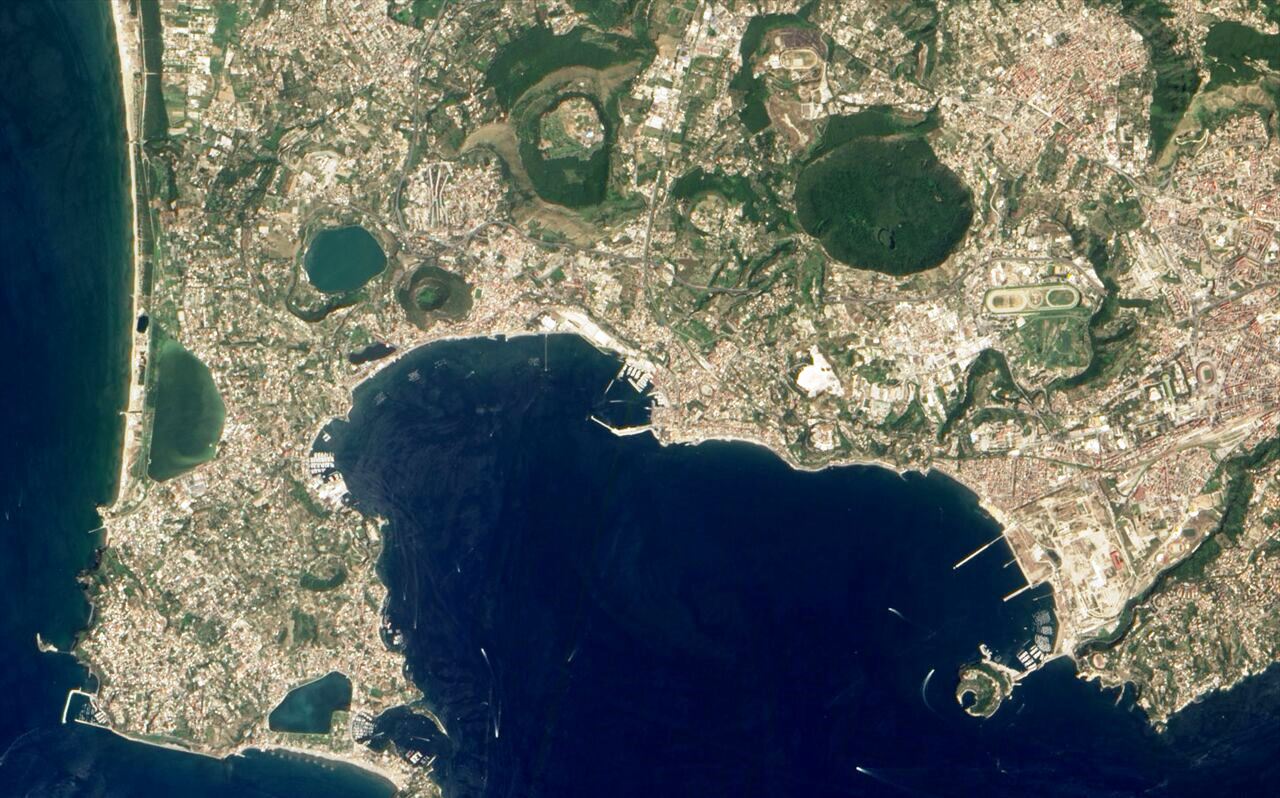
Mount Etna
Mount Etna is Italy and Europe's highest volcano, thanks to its height of 3.330 meters (about 10.900 ft) It lies on the Eastern cost of Sicily, the biggest among Italian islands. This volcano is still active and its eruptions happen at least once a year. According to the experts, Mount Etna's eruptions must have begun about 500.000 years ago, when Sicily didn't even exist yet. From the sea bed, volcanic materials fell out of the "young" Mount Etna's crater thus forming different layers of hardened lava and other types of debris which collapsed on one another, formed again, placed themselves side by side and heightened over the centuries. These layers formed what we call today "Mount Etna": that's why this volcano is considered to be a stratovolcano.
Mount Etna's complex nature is also due to its interesting structure, consisting in many craters, most of which are connected to different magmatic chambers. From time to time, new craters form on this mountain's surface: lots of them formed in the last century or even in the last few decades, with the most recent one, known as the “New South East Crater”, born only in 2007 and grown until 2013, reaching the same size as the older ones.
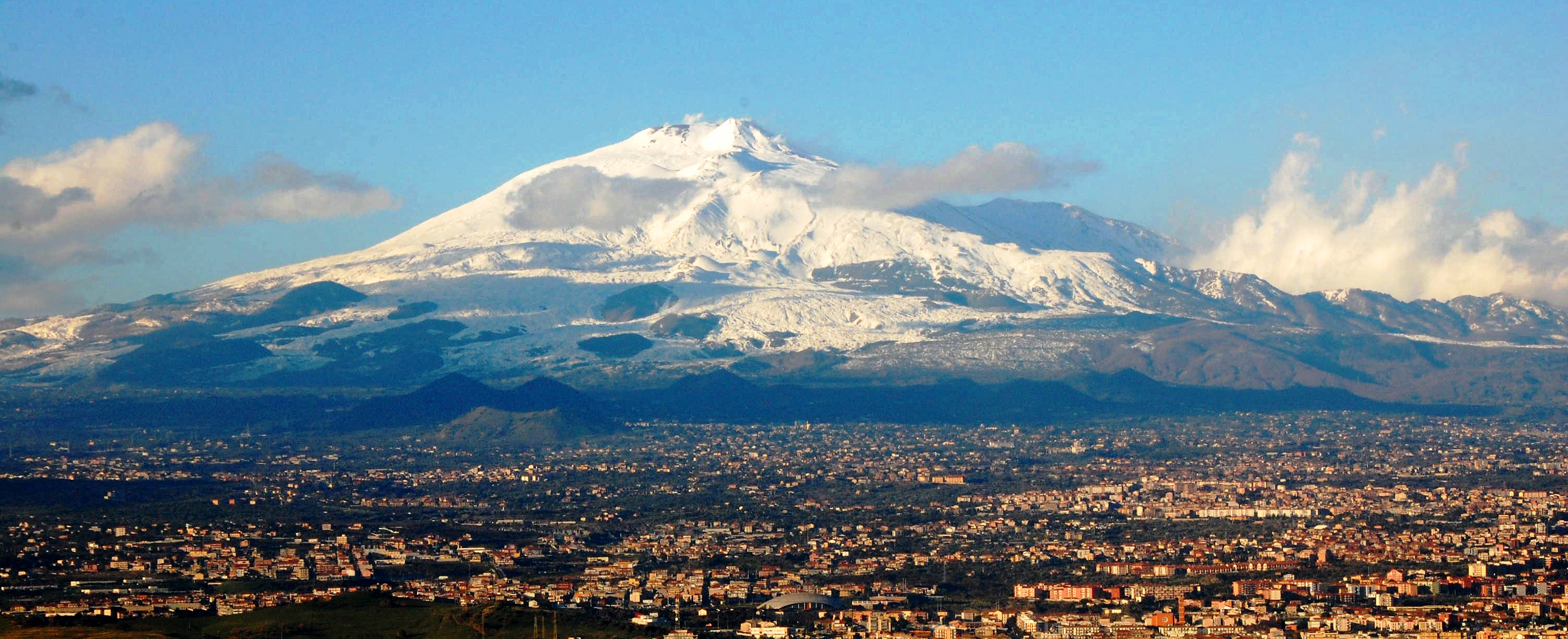
Stromboli (Aeolian Islands)
Stromboli is one of the most active volcanoes in the world and, from 1932 since today, its volcanic activity never stopped. Actually, Stromboli is a volcanic island belonging to the Aeolian Islands arcipelagus. This volcano is well known in Italy as the "Mediterranean Headlight" because of its amazing eruptions falling out of its main crater, which attracted lots of tourists in the last few decades making it one of the most visited volcanoes in the world. On average, Stromboli erupts every hour.
In the lower part of the island, about 2.000 meters beneath the sea level, there is a big depression which represents the main danger of the area: if the mountain would collapse on it, would move several thousand pounds of land and other debris, probably determining a violent tsunami with catastrophic consequences.
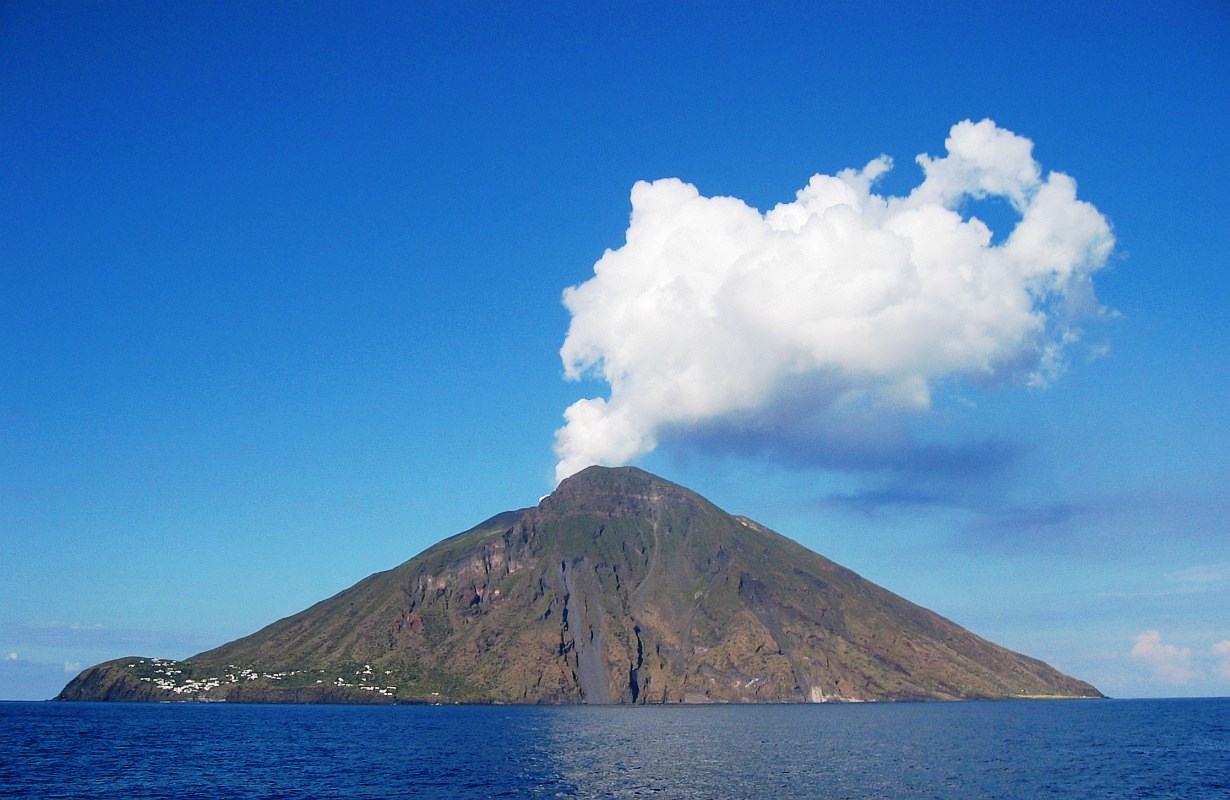
Vulcano (Aeolian Islands)
Vulcano (whose name in Italian means "volcano") rises on the homonym island in the Aeolian arcipelagus. Just like all of Italian volcanoes, it was formed by the movement of the African tectonic plate, pressing on the European one, thus making the ground rise and form mountains.
Its last eruption happen in 1890. Before, Vulcano had erupted a dozen times and its eruptions use to be devastating. Several small islands formed around the main one because of the debris released from its crater. Nowadays, the main danger is the toxicity of some gases coming from soil fractures.
